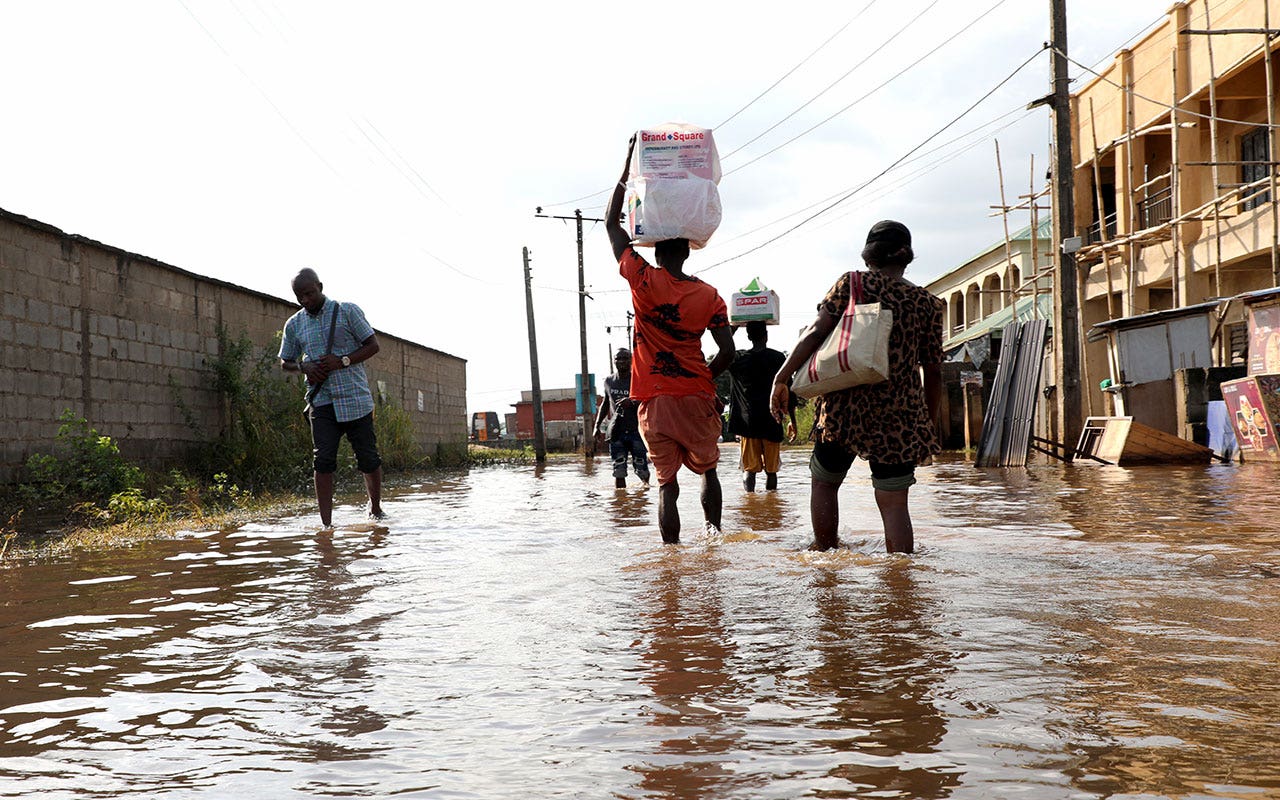A white grizzly bear known as Nakoda became a popular presence on social media since she first appeared in public near Banff National Park in the Canadian Rockies in 2020. Her frequent roadside appearances endeared her to visitors, who were enchanted by her rare blonde coat and the black streak running up her back.
But that fame came at a cost, according to members of Parks Canada’s regional wildlife management team, who saw a vehicle strike Nakoda on the Trans-Canada Highway in Yoho National Park in British Columbia on June 6. She was confirmed dead on Saturday, likely from the injuries she sustained, according to the team.
Her two cubs, born this past winter, were struck and killed hours earlier on the same highway, Parks Canada said.
Officials believe that Nakoda gradually became habituated to humans since she first found social media fame, causing her to be less wary around people and highways. She often ventured near roads despite efforts by wildlife management officials to keep her away. The team members, who knew Nakoda as Bear 178, began tracking her in 2022 after she learned to climb the fence by the highway.
Since 2022, the wildlife management team had trapped Nakoda and moved her away from roadsides three times. Also in 2022, Parks Canada instituted a no-stopping zone and reduced the speed limit on a section of the Trans-Canada Highway to discourage people from slowing down to photograph her and other wildlife.
Saundi Stevens, a Parks Canada wildlife management specialist, said at a news conference on Monday that her team was devastated by the grizzly’s death.
“Our Parks Canada wildlife management team has actually spent a significant amount of time, and I mean hundreds upon hundreds of person-hours, managing Bear 178,” she said, adding that the work involved being with her from “dawn to dusk” at times.
“Habituated bears rarely survive,” Ms. Stevens said in an interview on Tuesday. “Unfortunately, it’s all too common.” Ms. Stevens noted that the bear’s mother was also struck and killed by a vehicle in 2021.
At the time of the accident on June 6, members of the wildlife management team were nearby fixing a fence that had been built specifically to prevent the bear from getting near vehicles. The team members saw her become startled by the screech of a train, causing her to run out of a ditch and into the road in front of two vehicles. One was able to swerve out of the way, but the second struck the bear.
The staff members reported that they saw the grizzly climb back over the fence after being hit and run away with only a limp, giving them some confidence that she would recover. They believe Nakoda died from internal injuries, but were unable to perform a necropsy because of her position in the backcountry.
Since 2019, 23 bears, including seven grizzlies, have been killed on railways and roads in Yoho National Park, according to Parks Canada.
Ms. Stevens said that bears with highways in their home range often venture to roadsides. It is also common, she said, for bears and other wildlife to become habituated to humans in the area around Banff National Park in Alberta, which receives about four millions visitors every year. She encourages visitors to view wildlife from a safe distance of 100 meters, or about 328 feet.
“We recognize people come to see wildlife,” she said, “but there’s safe ways to view wildlife to prevent this.”






